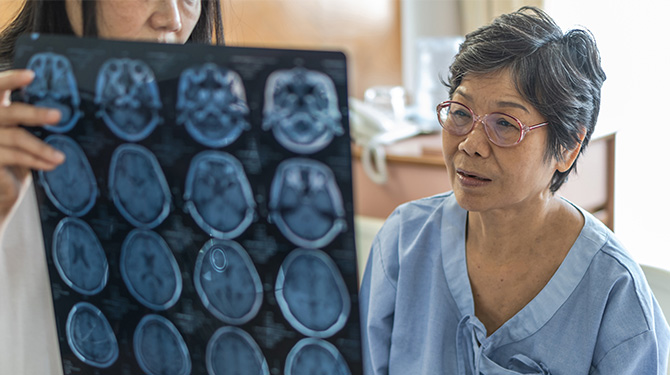Holiday Closings Notice
To view our list of holiday closures and adjusted hours, please visit our closings page.
If you or a loved one experience symptoms of a stroke, immediately call 911 and get to the nearest stroke center.
 As the saying goes, time is brain. A stroke occurs when a blood vessel in the brain either is blocked or bursts. As the moments following a stroke tick by, more brain cells die and surrounding tissue is damaged.
As the saying goes, time is brain. A stroke occurs when a blood vessel in the brain either is blocked or bursts. As the moments following a stroke tick by, more brain cells die and surrounding tissue is damaged.
The best care for stroke symptoms is the team that provides a quick, effective response to the situation. Every Catholic Health facility is a New York State designated Stroke Center, committed to providing the highest quality of care to our patients. In addition, Mercy Hospital is the region’s only Joint Commission Accredited Comprehensive Stroke Center, certified for their abilities to receive and treat the most complex cases from our stroke care network.
An ischemic stroke occurs when blood flow to the brain is interrupted by a blocked or clogged artery, usually due to a blood clot or cholesterol plaque. When this happens, doctors try to provide treatment that unclogs the blood vessel as fast as possible, to reduce permanent damage. There are two kinds of treatments:
The other type of stroke is a hemorrhagic stroke, which means blood is leaking into the brain’s surrounding tissue. This usually results from the rupture of a weakened blood vessel, also called an aneurysm. Hemorrhagic strokes are less likely to occur than ischemic, with almost 90% of all strokes happening because of a blocked artery.
Anti-blood clotting or blood-thinning medicines, like tPA, cannot be used in the case of a hemorrhagic stroke, because it would worsen the bleeding.
Instead, doctors work to repair the broken blood vessels by enforcing regular blood flow pattern with metal coils or flow diverters. This treatment can be administered as a catheter-based technique or through open brain surgery.
Creating a comprehensive recovery program after a stroke has occurred is just as important as the acute treatment itself. We encourage our stroke patients to participate in neuro-rehabilitation programs to advance their recovery:
Your doctor will work with you and your caregivers to create a personalized recovery plan for your specific condition.